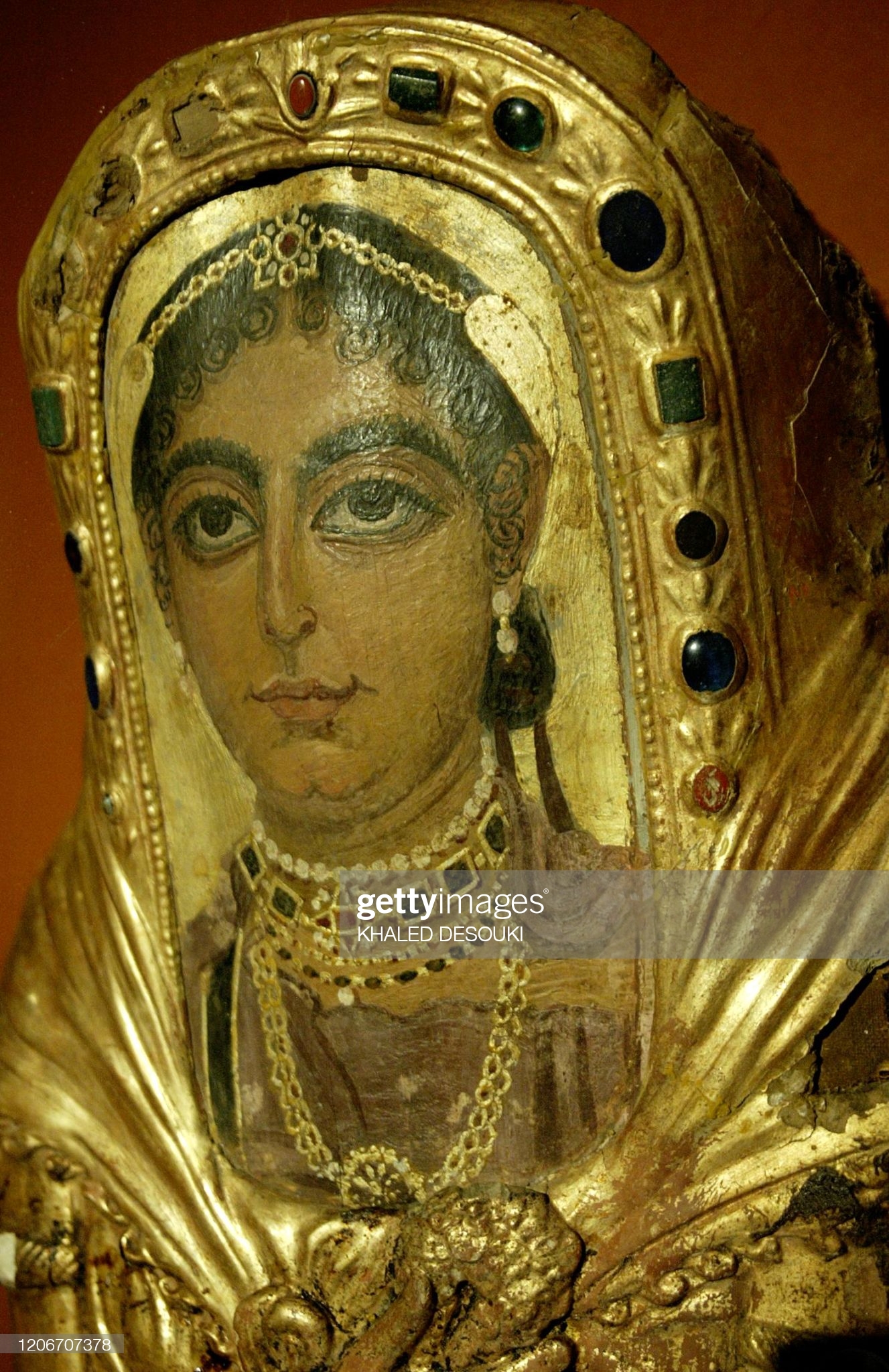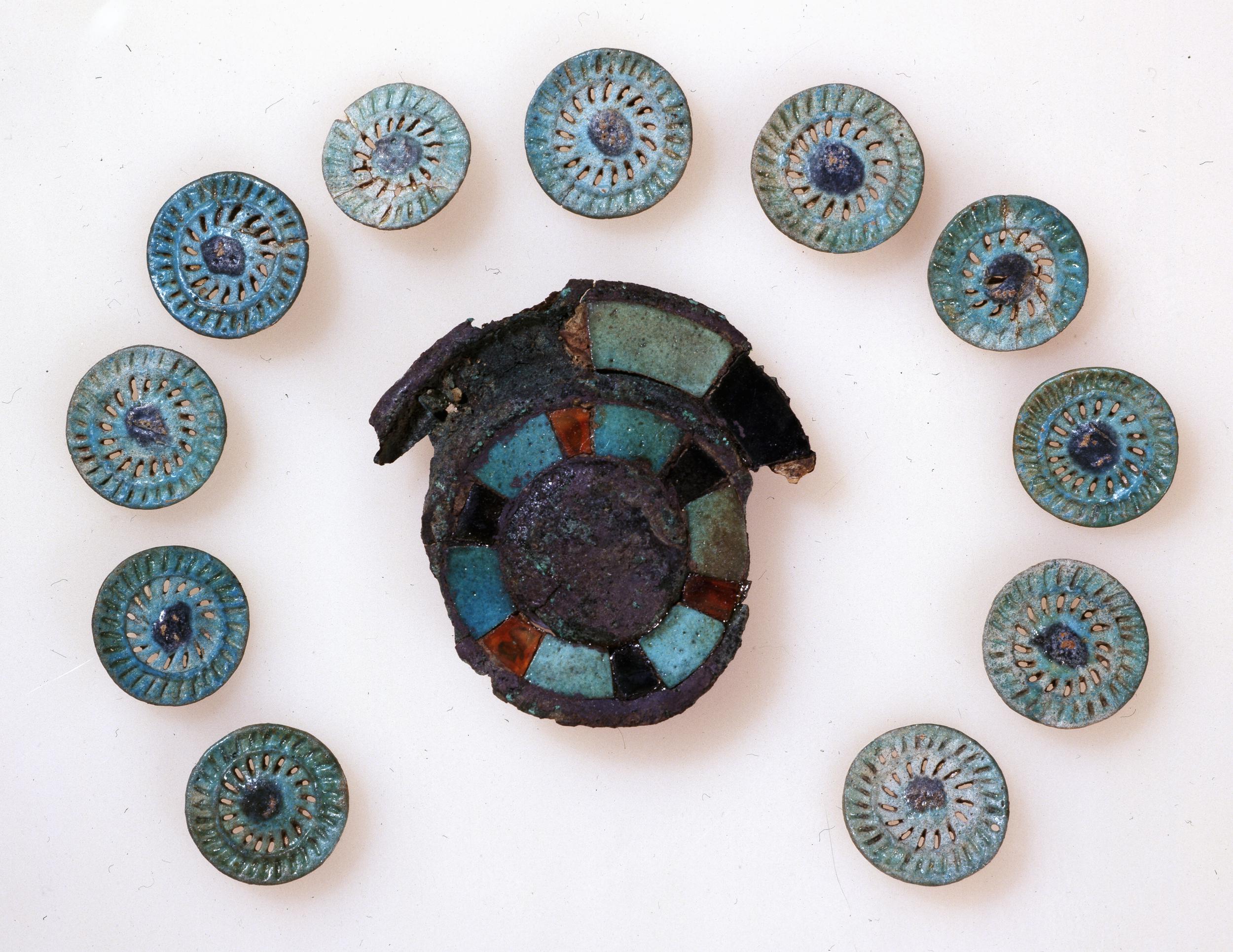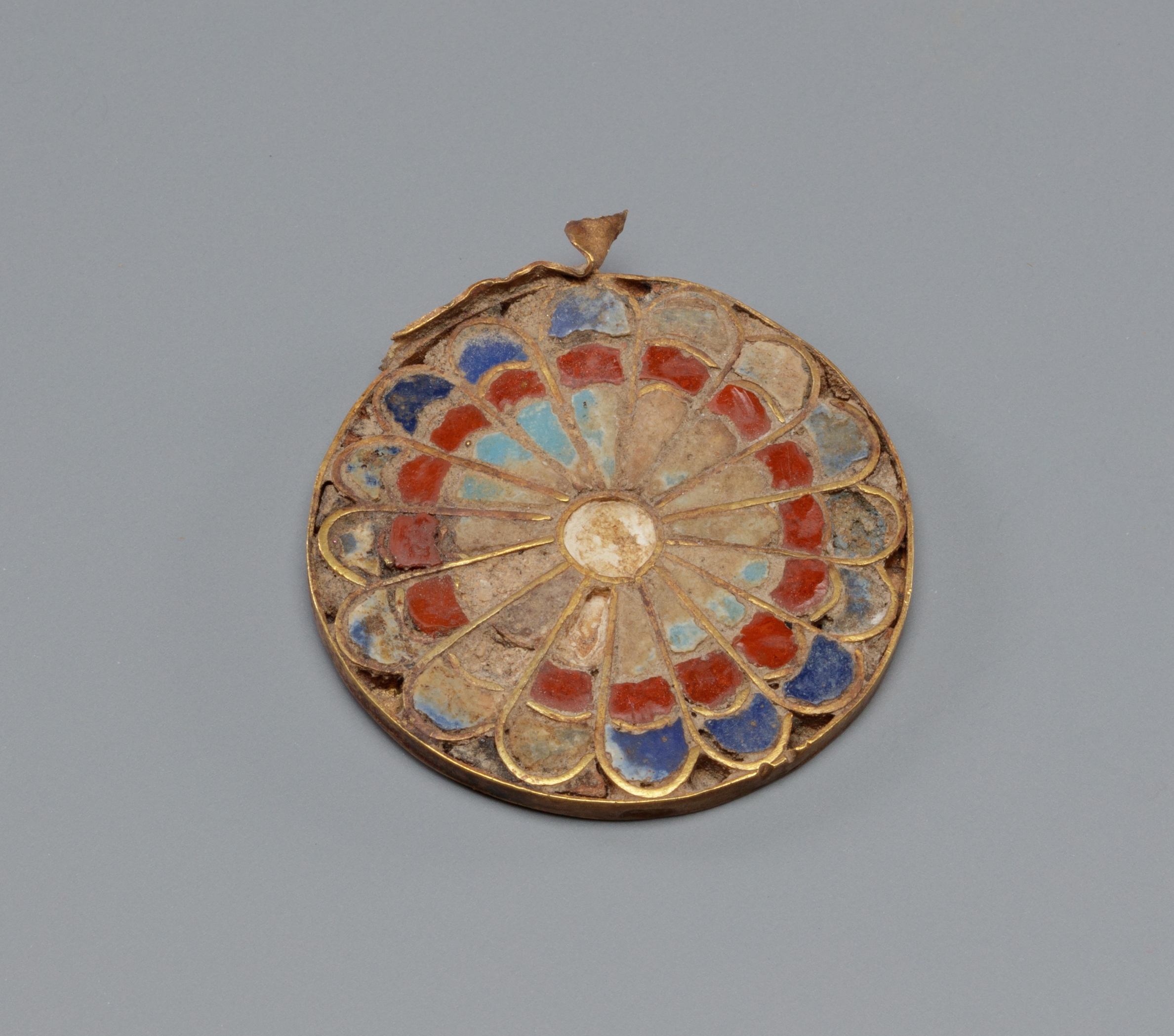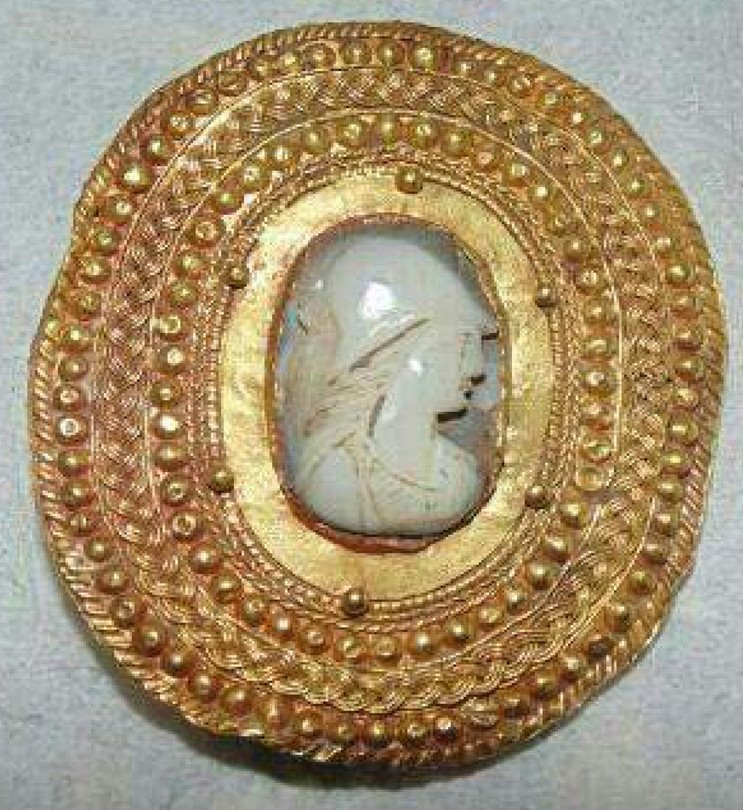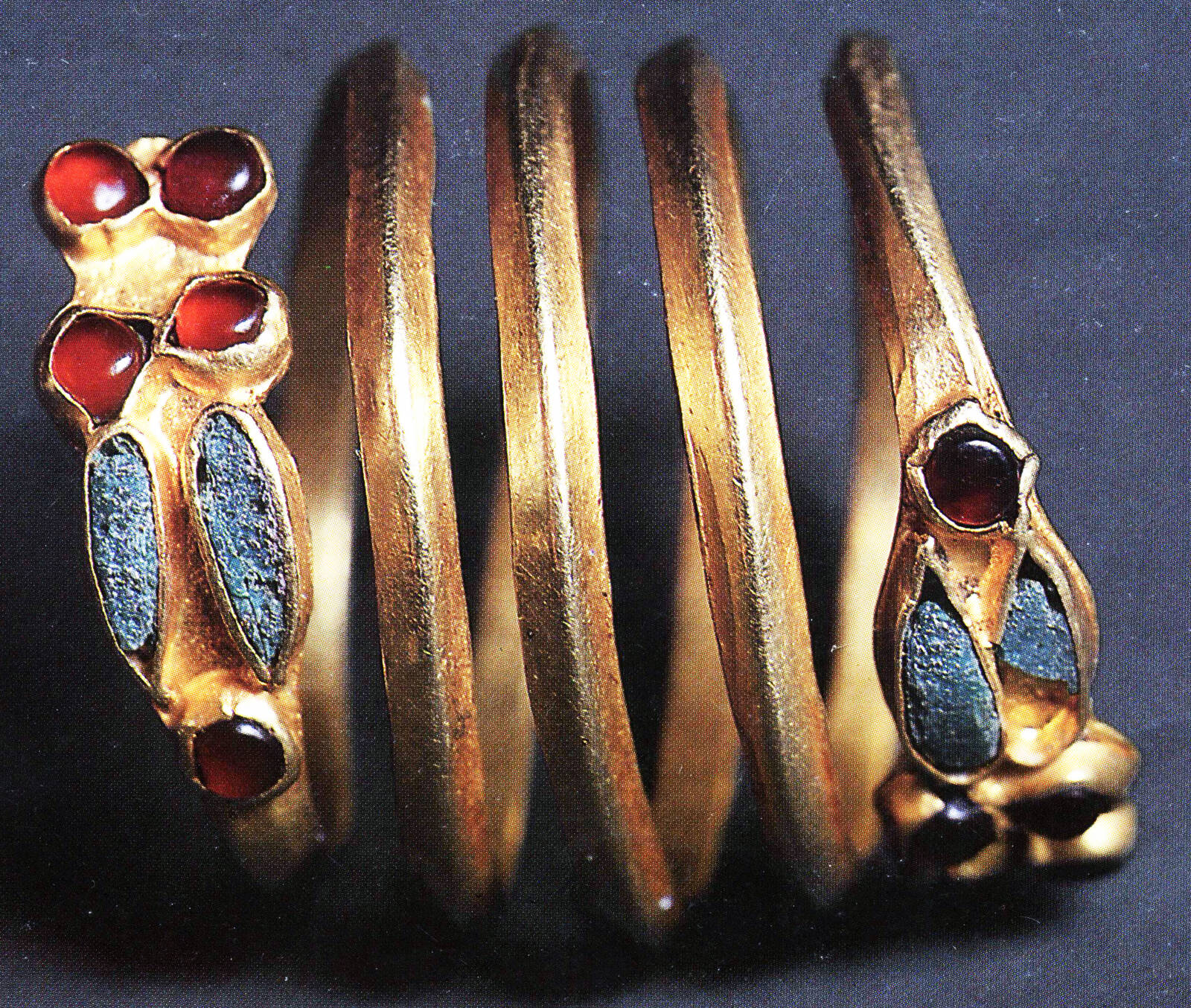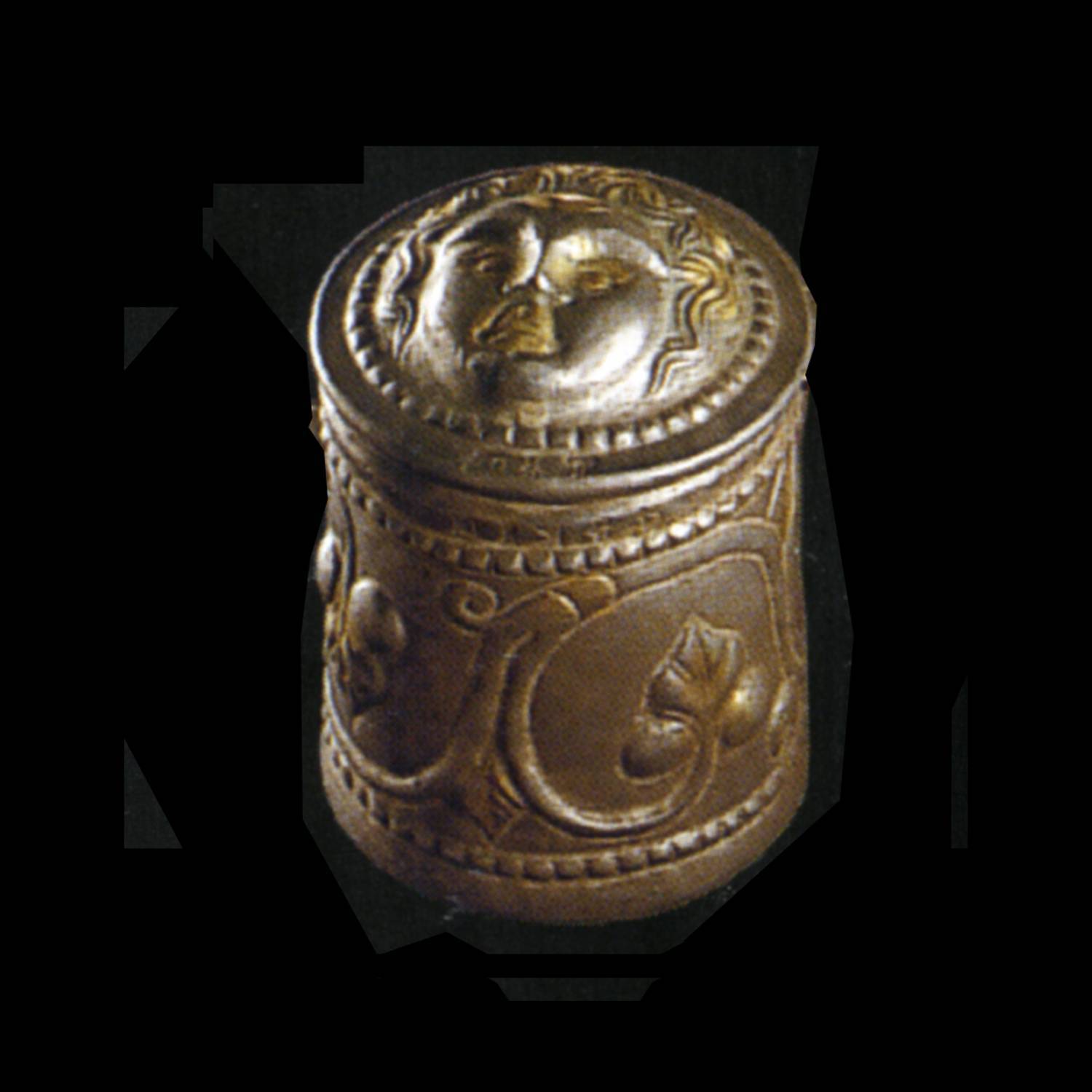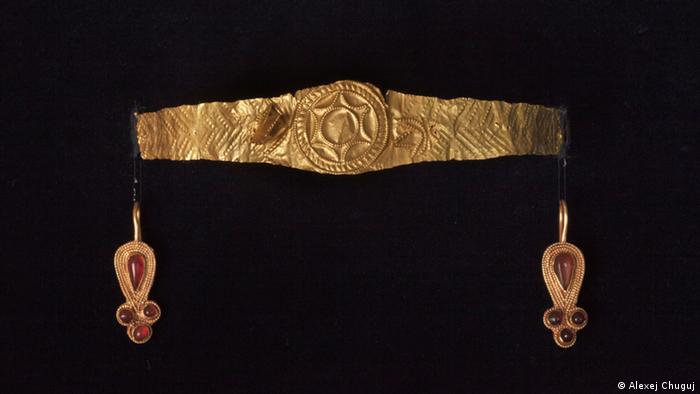Wooden painted “Peacock coffin” from the Coptic cemetery at Qarara, Egypt, the male burial most likely.
Dated to the 7th-8th century; was found intact, wrapped carefully in cloth, ribbons and cords.
Found in 1913 was re-examined lately (2015) and described by Béatrice Huber in the article “Coptic coffins from Qarara. The Pfauensarg (peacock coffin) in context” https://academia.edu
Is part of the collection of the Egyptological Institute at Heidelberg University (inv. no. 500).
” The ‘red and black cords’, which held the cloth firmly in place around the coffin, are thin woven red and brown ribbons that were generally used for the outer wrapping of the deceased and can be found throughout the cemetery. The red ribbons are made from linen fibres that were dyed with ochre or madder; the brown to dark brown ribbons (which have become almost black over time) are made from unbleached linen fibres. (…)
The corpse was simply tied up with cords from palm fibres. The garland around the neck of the
deceased was probably made of woven palm leaves, as shown by several recently found examples.12 The criteria used to determine the sex of the deceased as male are not known. No anthropological investigations were conducted during the excavations. Occasionally the sex of the deceased was determined on the basis of the burial equipment.
The material surrounding the coffin, along with the ribbons and cords, and the corpse itself and its wrappings and clothing, were not kept. (…)
The Heidelberg peacock coffin consists of two parts,
a low elongated box and a convex lid with the particularly unusual feature of a roof-like extension at the
head end. (…)
The entire surface of the coffin is painted, including the exterior foot end where traces of paint can still be recognised. Shades of color on the sides of the box reveal that the floral design ran more or less consistently around the coffin’s base. (…)
The floral design obviously depicts a garland of roses and not a grapevine (…)
The medallions are arranged in two rows of four. On the left-hand side, two different patterns alternate.
The first and third medallions have a blue background and contain a symmetrical vine composition consisting of four heart-shaped or candelabra-like forms (see Fig. 14). The second and fourth medallions have a light yellow background and display green tufts between floral motifs, probably stylized lotuses (…)
All eight medallions are framed by red-brown lines and a row of tongues with a dark core (…)
The front part of the gable roof in the form of a pointed triangle features a Latin cross on a red-brown background and placed between acanthus leaves and branches (Fig. 18). The arms and body of the cross are decorated with a light-coloured wave pattern and the ends of the arms are connected to the top of the cross via a light coloured line with hanging objects, presumably bells.
The centre of the cross is emphasized by a gem. The adornment of the cross with ornaments — as is indicated by the wavy lines — and pendant objects, as well as its position between leaves, identify the cross as the tree of life, a statement and indeed a message that elegantly expresses the triumphal character of the Christian hope of resurrection: life and not death is decisive. (…)
[The peacocks] Painted on the sides of the gable roof, they flank the adorned cross or rather are turned towards it. The light blue birds with a crest on their heads stand on a yellow background and are endowed with magnificent dark brown tails on which the small eyespots are visible in a row on three lines. A delicate brown vine or, perhaps better, a ribbon flutters behind the slender neck, and a black vine is depicted beneath the bird’s legs. The bird holds a long bead necklace in its beak, and the necklace shows more detail on the left- than on the right-hand side. The framing medallion displays the same border with a tongue pattern as the medallions on the coffin’s lid. This decor and also comparable variations can often be observed on the internal surfaces of angels’ wings, for example in Deir al-Choada (Esna) or in manuscripts.41 The corners of the roof’s side panels are characterized by symmetrically arranged acanthus leaves on a brown-red background, similar to the examples between the medallions on the lid. (…)
The decorative elements of the coffin have no non Egyptian parallels and all, even the ornamental design,
already belong to the ‘Coptic canon’. They do not indicate an early date, as the closest parallels in sculpture, painting and textiles date to the 7th–8th centuries AD. However, a small detail originates from a non-Egyptian context, namely the bands that flutter behind the peacock’s neck. This detail can be traced back to representations of birds from the Sasanian–Syrian region. On the basis of a cloth in Darmstadt, the textile expert Dorothee Renner-Volbach has compiled the most important parallels and suggested a chronological assignment to the 7th–8th centuries AD. Thus, all decorative elements of the coffin point to this time period. (…)










